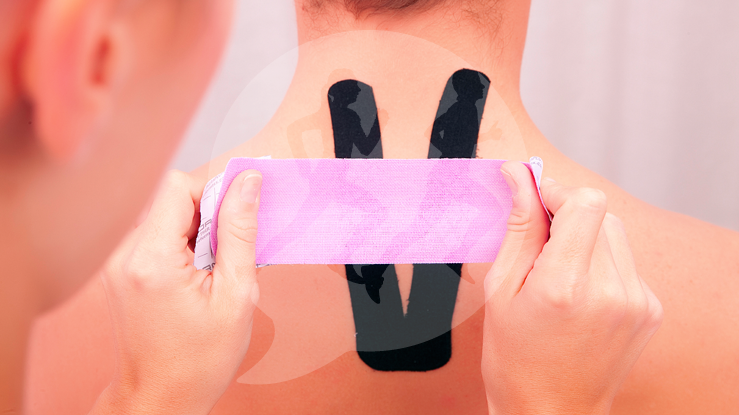Many people swear by tape to stabilise joints and reduce discomfort following an injury. It has been used for many years by sports professionals and by those in rehabilitation. When applied properly, it can be very effective. Foot care experts, Simply Feet have put together a guide for everything you need to know about athletic tape.
How Does It Work?
Tape is thought to work in a number of ways. Firstly, it enables the wearer to more easily ‘feel’ the taped limb or muscle. Proprioception is important, as it tells us where in space our body is. This not only allows us to reduce the risk of injury, but it also helps the body to feel exactly where an injury is affecting it.
Tape can also reduce pain and can appear to speed up recovery, perhaps partly because of this increased proprioception, which prevents overuse of the affected area.
Types of Athletic Tape
There is a range of different tapes available. These include:
Rigid tape – A stiff tape, such as Leukoplast tape, offers efficient stabilisation of joint structures by providing little give and reducing movement within the joint.
Under tape – This is typically applied under rigid tape to protect the skin.
Elastic tape – A flexible cotton tape which allows the skin to move and breathe.
Felt tape – A comfortable glue-less tape which provides a barrier to the skin.
Cohesive bandage – ‘Sticky’ bandages which can be wrapped around the muscle or joint.
Kinesio-type tape – Particularly popular within sports, as it enables the wearer to move freely.
When and How to Use Athletic Tape
1. To Stabilise Ankles
Alongside the use of orthotics, ankles can be taped to stop them rolling inwards and prevent sprains. You should use an adhesive, glue-based or rigid tape, such as Leukoplast, applied directly above the anterior and medial malleolus, on the inside of the foot and threaded under the sole. Pull the strip up the front of the tibia, ending approximately 10 cm under the knee. This can be reinforced with a second piece if necessary and secured with a strip at each end.
2. To Stabilise Knees
Knee taping can be used to provide support and promote better joint awareness. Again, use a glue-based adhesive tape applied to the extended knee. Place two lengths of tape on the lateral and medial of the joint, and secure with anchor strips on each side. It is possible to buy pre-cut packs of Kinesio tape.
3. Strengthen Shoulders
Tape can be used to solidify shoulders and increase proprioception of the joint and muscle. You may need help to apply tape to the shoulders. Raise your shoulder approximately 1 cm by flexing and raising your elbow. Then place three strips vertically – travelling posteriorly, medially and anteriorly – across your shoulder and down your arm. If positioned correctly, your shoulder should feel slightly raised.
4. Open Elbows
Adhesive tape can be used to reduce pain and discomfort in the elbows. It can take a little practice to achieve this, but once correctly positioned, it can be very effective. Apply two pieces of tape together over the painful area, pulling one onto the forearm either medially or laterally.
5. Shore Up Muscles
A cohesive bandage, glue-based adhesive or elastic tape can be wrapped around the affected muscle or joint. Reduce swelling and prevent occlusion of the joint by wrapping lightly at first.
Regardless of how or where you use tape, always check for tingling or numbness, and if necessary re-wrap or adjust.

About Paul Stainthorpe
Running has been part of my life since 2011. While growing up I hated running and would do anything to avoid it at school. Give me a ball and a racket any day. It’s funny how some things change. I run for good. In 2012 I ran the 12 Days of Christmas for the Percy Hedley Foundation. In 2013 I attempted (with friend Lee Nyland), the 12 parkruns of Christmas for the Tiny Lives Trust.- 3 Careers For Fitness And Sports Enthusiasts - January 8, 2018
- 5 Essential Steps To Making The Most Of Your Weight Loss Holiday - November 6, 2017
- How To Stay Safe And Healthy When You’re Running - August 4, 2017
- How Quitting Smoking Will Improve Your Fitness Levels - May 4, 2017
- How Much Is Too Much? - April 26, 2017
- Jojoba Oil And Your Beard - March 24, 2017
- Top 10 Protein Power Breakfasts - March 21, 2017
- 4 Immune Boosting Porridge Toppings - February 2, 2017
- How To Fit A Healthy Lifestyle Into A Busy New Year - January 13, 2017
- Don’t Be Fooled By These 3 Weight Loss Myths - December 21, 2016


























